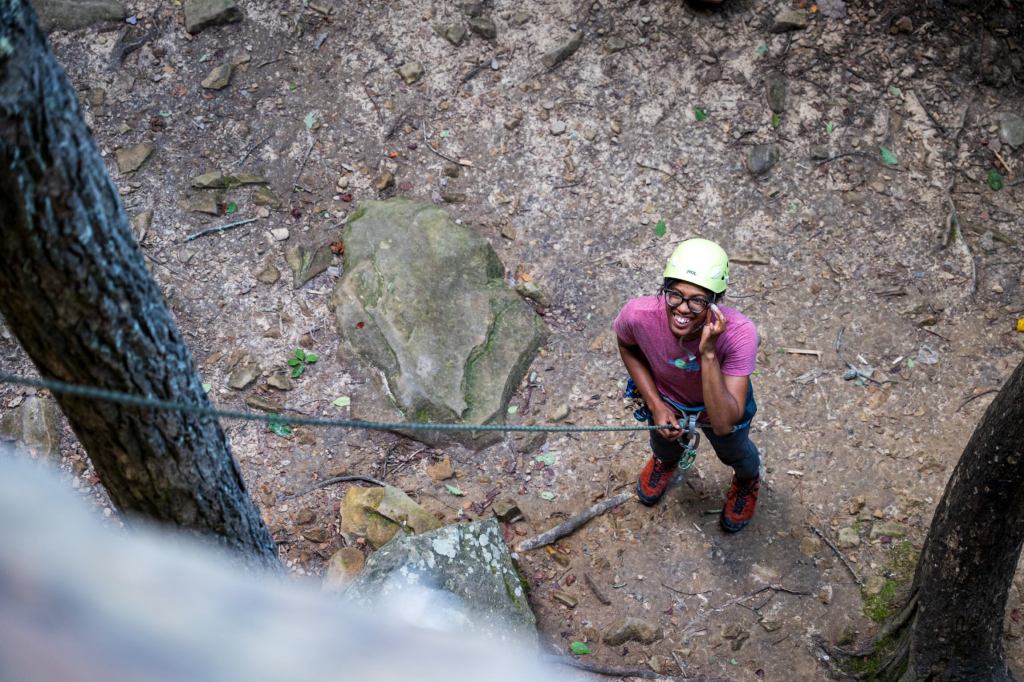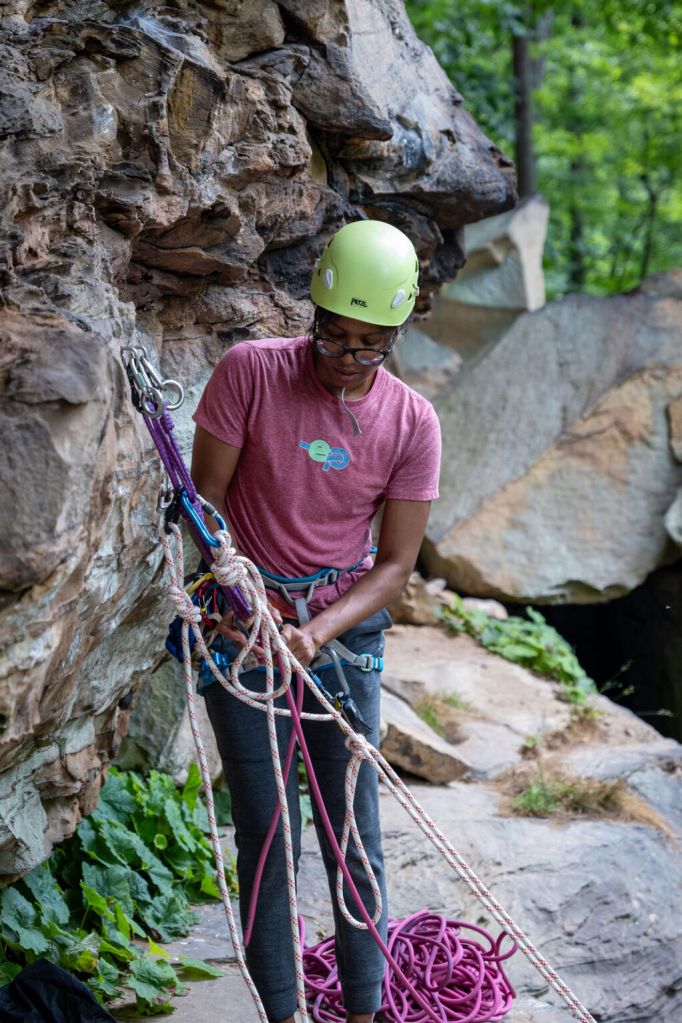

On my 35th birthday, I embarked on a unique adventure – climbing in the urban landscape of the West Loop in Chicago at Brooklyn Boulders. That day, I discovered my passion for climbing and, as they say, the rest is history. Over the past five years, I have evolved from a climbing enthusiast to a professional deeply ingrained in the climbing community.
Becoming a Climbing Expert:
In my journey, I’ve not only honed my climbing skills but have also become deeply involved in the sport. I managed a rock climbing gym and shared my knowledge by teaching others the art of climbing. As a leader of the women’s rock climbing group, SheSends, in Indianapolis, Indiana, I’ve fostered a supportive and inclusive climbing community.
My Vision and Goals:
My dedication to climbing has led me to pursue the goal of becoming a certified single pitch instructor. I believe that sharing my experience and expertise with the climbing community is essential to the sport’s growth. Climbing is not just a hobby but a lifestyle that promotes positivity and physical well-being. I’m committed to introducing it to people from all walks of life.
Indoor vs. Outdoor Climbing:
While some climbers may never venture beyond the controlled environment of a climbing gym, others yearn for the outdoor world. For those venturing into “real” rock climbing, I offer hearty congratulations. Climbing outdoors requires similar skills, but it also introduces you to new challenges, from anchor setting to route finding. If you’re new to outdoor climbing, consider taking a class or hiring a professional climbing guide to ensure a safe and enjoyable experience.
Essential Gear for Outdoor Climbing:
- Quickdraws: At least 12 quickdraws are essential for most routes.
- Outdoor Rope: A single dynamic rope of 60m length or more is crucial for your climbing adventures.
- Climbing Shoes: Invest in climbing-specific shoes for enhanced grip and stability.
- Harness: A quality harness is vital for safety and gear management.
- Chalk Bag: Most climbers use chalk to keep their hands dry and maintain a good grip.
- Anchoring Gear: You’ll need gear for anchoring, including quickdraws.
- Cleaning Gear: Proper gear is essential to safely clean routes after climbing.
- Rope and Gear Bag: A spacious bag to carry all your gear and rope.
- Snacks: Staying hydrated and fueled is crucial for a long day at the crag.
Cleaning the Route:
Cleaning a climbing route is an essential skill. It’s advisable to practice cleaning on the ground before attempting it on a route. Always go with an experienced climber who can guide you through the process. Communication between the climber and belayer is key to a smooth cleaning process.
Common Mistakes in Sport Climbing:
Stay vigilant for common mistakes such as z-clipping, back-clipping, and back-stepping. These errors can occur both indoors and outdoors, leading to safety risks.
Embrace Falls:
Falling is an inevitable part of climbing, but it’s crucial to embrace it rather than fight it. Avoid holding onto the rope during a fall, as it can lead to rope burn. Practicing falls with your belayer can help you become more comfortable with this aspect of climbing.
Outdoor Climbing Etiquette:
Respecting the outdoor climbing community is paramount. Leave no trash behind, respect wildlife, and keep noise levels down. Be organized at the crag and follow the rules and regulations of the climbing area.
In Conclusion:
Sports climbing is both thrilling and challenging. It’s important to be aware and continue practicing to gain confidence. With climbing’s increasing popularity, it’s our duty to educate future climbers about respecting the climbing environment. Climbing gyms are at the forefront of this surge, introducing more people to the sport. Let’s ensure that they understand and respect the values of outdoor climbing.